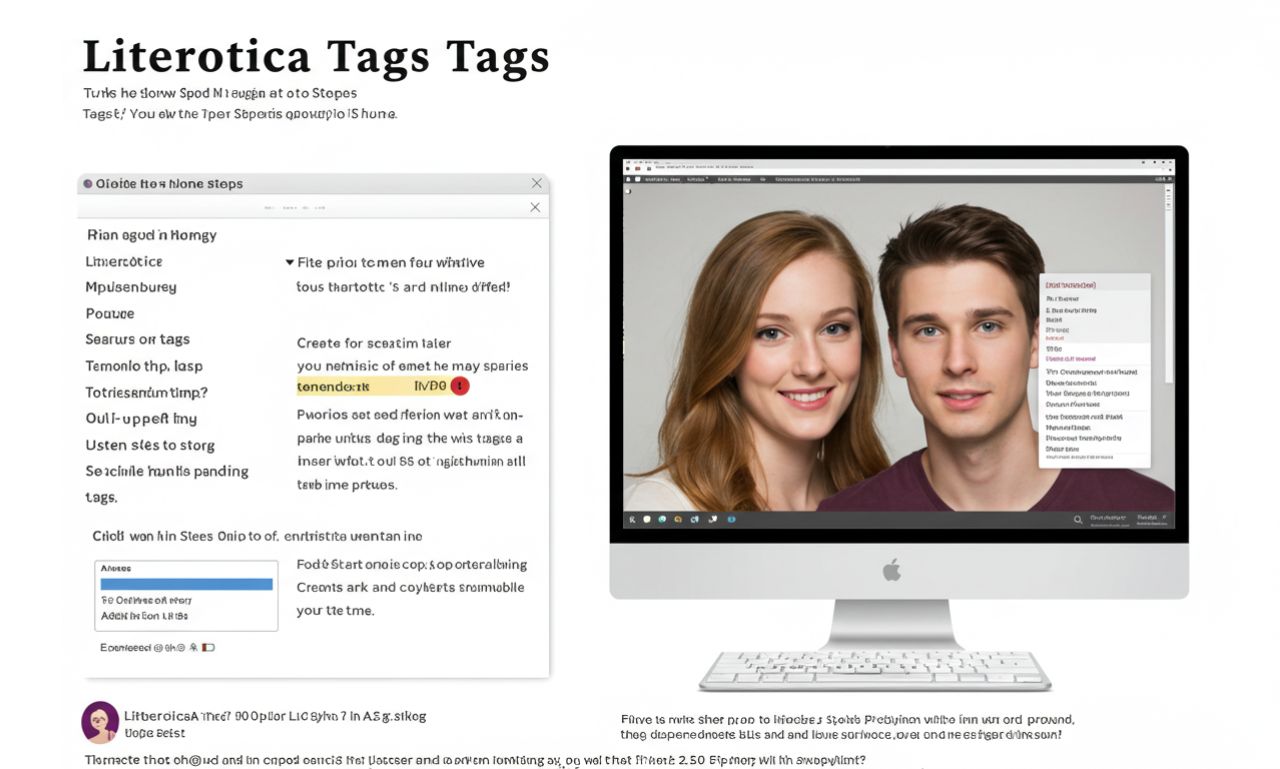The world of digital storytelling has evolved with platforms where readers and writers connect through diverse narratives. One of the features shaping these experiences is literoticatags. These tags guide readers toward content that matches their interests while helping writers reach the right audience. In this article, we explore the origins, uses, and significance of literoticatags in online literature.
What Are Literoticatags?
Literoticatags are labels or keywords attached to stories, articles, or posts on online literature platforms. They categorize content according to themes, genres, or styles, making it easier for readers to find specific narratives.
For example, a story might include literoti catags like:
-
Romance
-
Fantasy
-
Adventure
-
Historical fiction
-
Mystery
By using these tags, platforms create a more structured reading environment where preferences are prioritized.
The Purpose of Literoticatags
Enhancing Reader Experience
Readers benefit from literoti catags because they quickly locate content that aligns with their tastes. Instead of scrolling through unrelated works, tags filter stories into accessible categories.
Supporting Writers
For writers, literoticatags improve visibility. By tagging a story correctly, writers increase the likelihood of their work being discovered by readers searching for that theme.
Organizing Digital Platforms
Large databases of stories require order. Literoti catags serve as a sorting mechanism, ensuring platforms remain structured and user-friendly.
Origins of Literoticatags
The rise of literoti catags can be traced back to the early 2000s, when online platforms started using metadata to improve discoverability. Initially simple, these tags evolved into detailed systems that now cover a wide variety of genres, emotions, and styles.
Their development reflects the growing demand for personalized reading experiences, where a reader can instantly access exactly the type of content they enjoy.
How Literoticatags Work
-
Tagging Content – Writers assign relevant literoti catags to their work before publishing.
-
Search Functionality – Readers use the search bar or filters to find content by tags.
-
Algorithmic Sorting – Platforms analyze literoti catags to recommend similar stories.
-
Community Engagement – Readers can follow tags to stay updated with new stories in their preferred categories.
Categories
Genre-Based Literoticatags
These are the most common. They include categories such as romance, science fiction, horror, or drama.
Theme-Based Literoticatags
Themes like friendship, betrayal, or survival give stories emotional depth and guide readers toward narratives with specific vibes.
Audience-Specific Literoticatags
Some tags target specific audiences, like young adult fiction or mature content, ensuring readers find age-appropriate material.
Benefits
For Readers
-
Saves time in finding preferred content.
-
Introduces them to similar works based on interests.
-
Enhances the overall reading journey.
For Writers
-
Boosts story visibility.
-
Attracts a targeted audience.
-
Builds a consistent reader base.
For Platforms
-
Ensures organized data.
-
Improves content discoverability.
-
Encourages reader engagement and retention.
Challenges
Despite their usefulness, literoti catags come with certain challenges:
-
Overuse of Tags – Adding too many tags can overwhelm readers.
-
Inconsistent Tagging – Writers may misuse or mislabel tags, leading to confusion.
-
Evolving Language – As genres and reader preferences evolve, literoti catags must adapt.
Best Practices for Literoticatags
To maximize their effectiveness, both writers and platforms should follow certain guidelines:
-
Be Specific – Choose precise tags that reflect the story accurately.
-
Limit Quantity – Focus on a few strong literoti catags rather than dozens of generic ones.
-
Update Regularly – Refresh tags if the story expands into new themes or genres.
-
Follow Platform Guidelines – Each platform may have rules for literoti catags, and adhering to them ensures consistency.
Role in SEO
Interestingly, literoti catags function much like SEO keywords. They boost discoverability, making it easier for content to surface in search engines and within platforms.
By applying relevant literoti catags, writers increase their chances of reaching audiences both on the platform and through external searches.
Future of Literoticatags
With technology and artificial intelligence advancing, the future of literoti catags looks promising. Upcoming trends may include:
-
AI-Generated Tags – Automated tools assigning smart tags based on story analysis.
-
Personalized Tags – Systems that adapt tags to individual reader behavior.
-
Community-Driven Tags – Readers suggesting tags for stories to reflect collective interpretation.
Examples of Literoticatags in Use
-
A romance novel tagged with romance, young adult, emotional journey.
-
A thriller tagged with suspense, mystery, detective, crime.
-
A fantasy tagged with dragons, magic, epic adventure.
These examples show how literoti catags help both writers and readers navigate digital storytelling spaces.
Why Literoticatags Matter
Without literoticatags, online platforms would lack structure, and readers would struggle to find the content they love. These small yet powerful tools shape how stories are discovered, read, and remembered.
Conclusion
The concept of literoti catags goes beyond mere labels. They are the backbone of digital storytelling platforms, shaping how readers interact with stories and how writers reach audiences.
By understanding and using literoti catags effectively, writers can maximize visibility, readers can enhance their experience, and platforms can maintain structured content ecosystems.
In the digital age, where content overload is a reality, literoti catags remain an essential bridge between storytelling and discovery.
